Winter Birds of the North Cascades
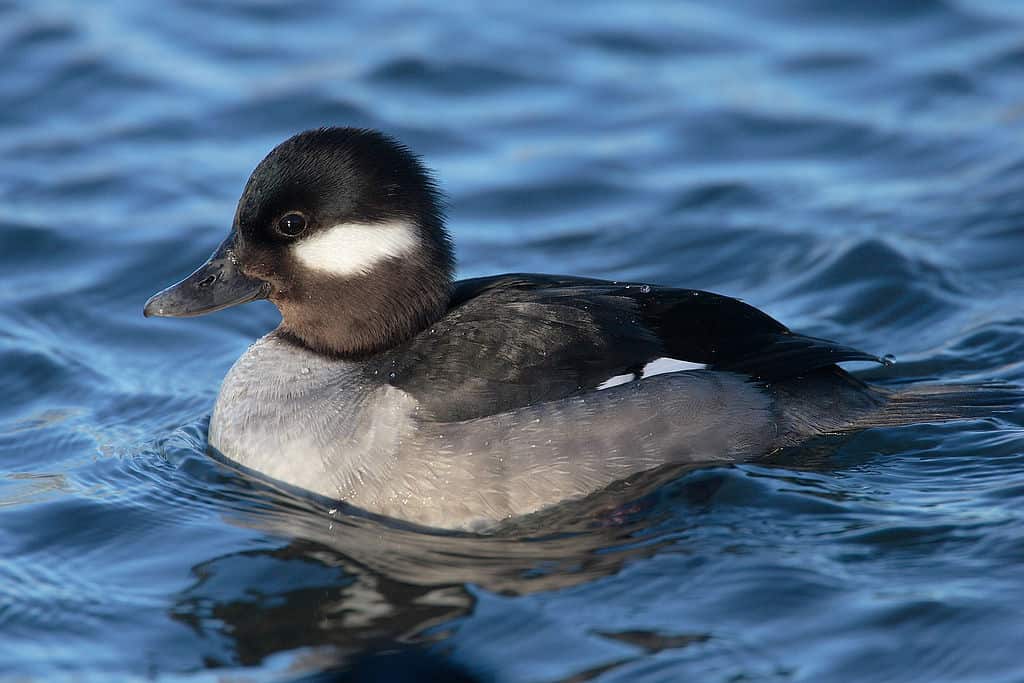
Here in the northern reaches of one of the most rugged and remote mountain ranges in the continental US, winter has brought traditional snows and a quite cool December. For many, winter in these mountains means cold rain, snow, and brief glimpses of sun. The landscape for the most part is asleep, resting under snow waiting patiently for the return of the sun and the life of its warmth. Not all are asleep and if you know who to look for, the forest and rivers are busy with our winter friends.
Birds are amazing creatures and even in these remote snowy mountains, glimpses of them can be seen on a daily basis. Winter is a time of scarcity but for the birds who can eke out a living here, the competition is low.
Members of the finch family, common throughout northern North American, are regularly found here during both winter and summer. Two species that I have seen throughout the winter are the Pine Siskin Spinus pinus and the bright showy Red Crossbill Loxia curvirostra. Both birds are exclusively seed eaters. The crossbills have highly adapted bills that cross over themselves and are used to pry open conifer cones, as their tongue then reaches in and grabs the seed. Pine siskin have thin strong bills for prying into small cones such as hemlock and for extracting the small seeds of birches and alders. These two species are some of the stars here during the winter and can be noticed quite easily due to their highly vocal flocking habits.
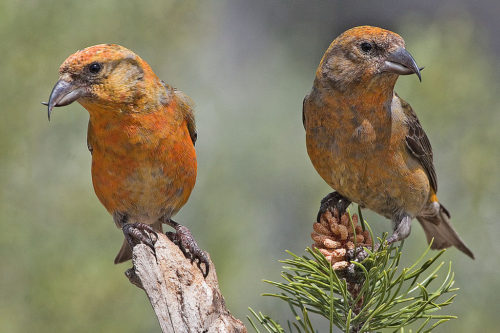
A male red crossbill. Photo courtesy of Wikipedia
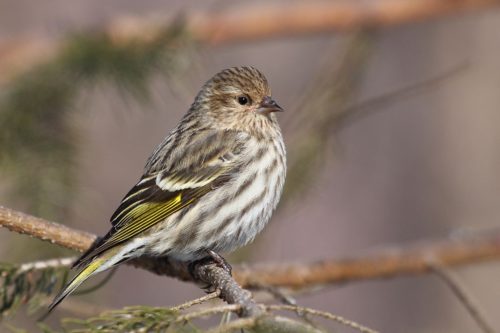
Pine siskin. Photo courtesy of Wikipedia
Pine siskin can be seen readily flying in large numbers from tree to tree, vicariously feeding wherever they land. Their loud calls and buzzing-like song “shreeee” coming from high in the tree tops are sure to give away of their presence. If you get a chance to gaze at a flock you might also notice a few larger crossbills which sometimes mix with the pine sinkin. The crossbill, though a bit bigger, are also very vocal. This time of year you might see a bright red male singing from the very top of a conifer.
There is another group of winter birds that are dependable standbys in these forests throughout the year. Although different species, these seed and insect eaters flock together during the winter in order to increase their chances of finding food. Most being small, they hide well but due to their food being mostly in dense conifers, are able to be found by their constant calling to each other. These common small song birds include the Chestnut-Backed Chickadee Poecile rufescen, Red-Breasted Nuthatch Sitta canadensis, Brown Creeper Certhia Americana, Golden Crowned Kinglet Regulus satrapa and possibly its cousin the Ruby Crowned Kinglet Regulus calendula. Wherever you go in the forest, you are likely to hear at least a few of these amazing small birds taking in as many calories as they can before another cold winter night.
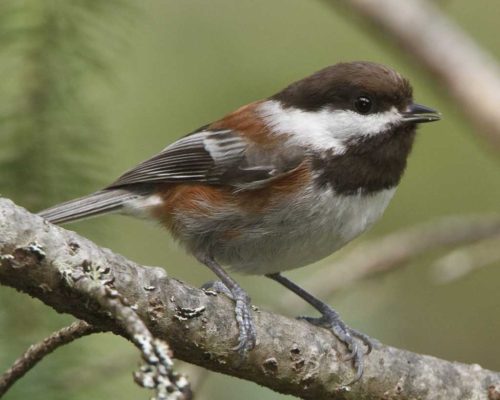
Chestnut-backed chickadee. Photo courtesy of Wikipedia
There are of course a few larger birds that are also year-round residents to these mountains. Always on the move with curious eyes, this group of birds are known as the corvids and here they include the Common Raven Corvus rorax, Steller’s Jay Cyanocitta stelleri and the friendly Gray Jay Perisoreus canadensis. These birds are highly intelligent, always willing to let you know they are nearby, especially the Gray Jays who likes to ask for treats.
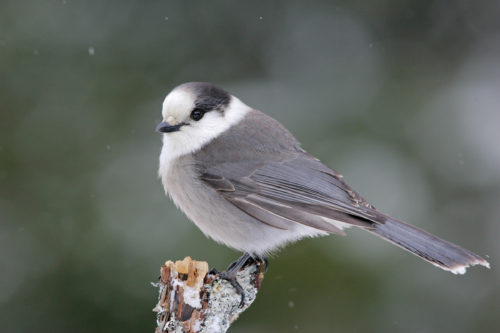
Gray Jay. Photo courtesy of the National Audubon Society
Though water usually succumbs to the cold of winter, on the west side of the mountains it stays just warm enough to provide a home for a few water loving species. A few hardy diving ducks have been sticking around. This includes the fish loving Common Merganser Mergus merganser, the small but amazingly beautiful Bufflehead Bucephala albeola, the more robust Common Goldeneye Bucephala clangula and its rarer cousin the Barrows Goldeneye Bucephala isandica. All of these have been seen so far in the upper Skagit River drainage, taking advantage of the warmer water and lush aquatic prey that they have apparently been finding.
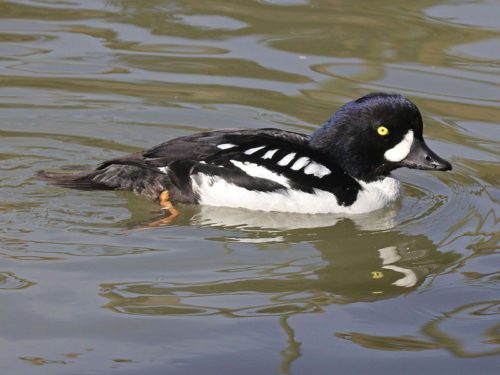
A male Barrow’s goldeneye. Photo courtesy of Wikipedia
A smaller but even more amazing water loving resident bird which can live in the most inhospitable environments, as long as there is flowing water, is our incredible dipper. North America’s only aquatic songbird, this small creature is bound to brighten anyone’s day. Both flying and walking into and out of the water, these incredible little birds walk search out their staple, macro invertebrates. This time of the year, you might also find them brightening a gloomy day with their beautiful long trilly flute-like song.
Last but not least are our reclusive birds of prey. For travellers along the upper Skagit River and other places with open water, there is always a chance for seeing our national bird, the Bald Eagle Haliaeetus leucocephalus, peering for a trout to catch or on patrol for any dead salmon that might still be around. Harder to find but possibly more common is one of our larger forest loving owls, the Barred Owl Strix varia. Becoming more active now due to their breeding season beginning, an evening walk might bring you their distinct call, “hooo-hooo Whoo cooks for Youuu”
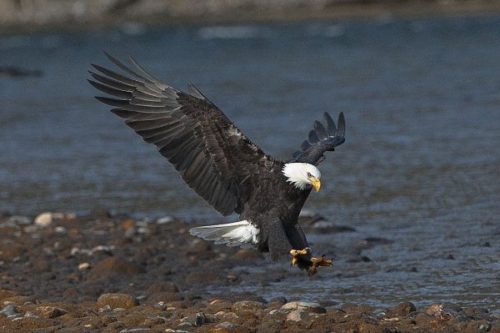
Bald Eagle on the Skagit River. Photo courtesy of Skagit River Bald Eagle Interpretive Center
Whatever brings you into these mountains during the last few months of the winter will surely give you an opportunity to meet and enjoy at least a few of our avian winter residents. As we know, along with them too, the days are getting longer and spring thaw will be here eventually. So as you get out and enjoy our brisk mountain air, tip your ear and sharpen your gaze for the chance to see our fellow winter residents here in the North Cascades of Washington!
Written by Daniel Dubie, avid birder, naturalist and graduate M.Ed. student at North Cascades Institute and Western Washington University.
Title photo of a female bufflehead, courtesy of Wikipedia


Thanks for this blog post! It helped me find the name for the Gray Jays that said hello to us on our snowshoe near Mt Rainier.